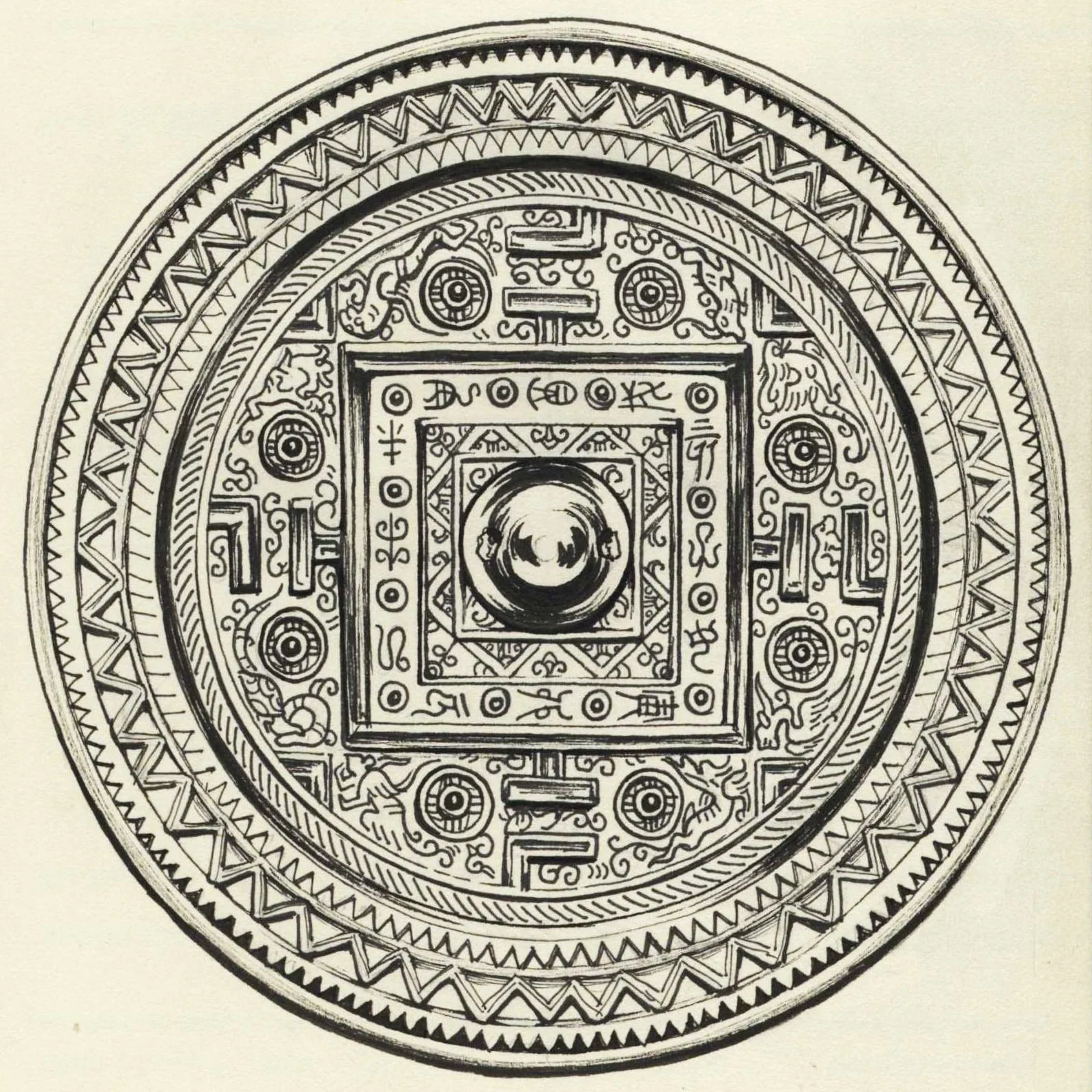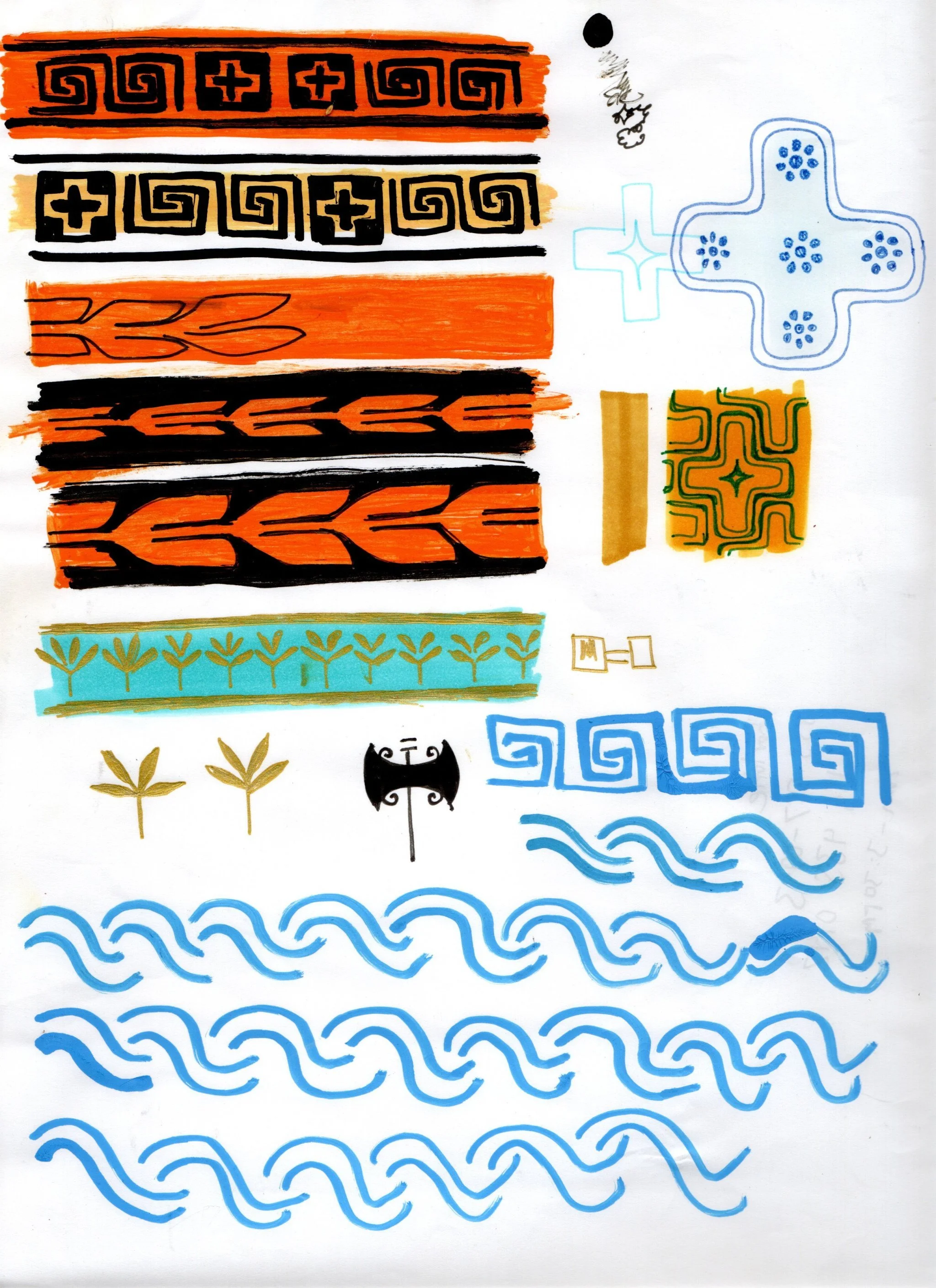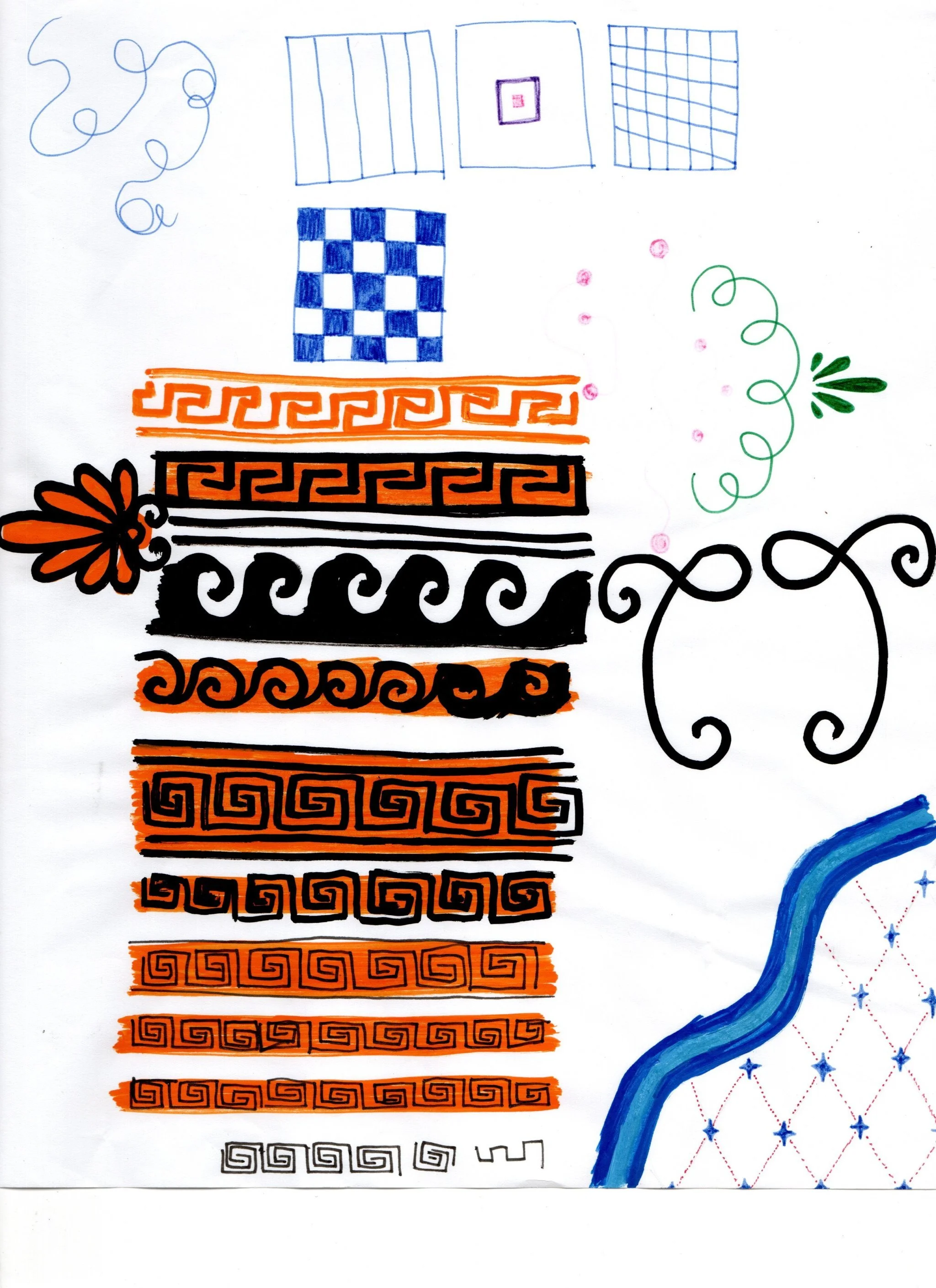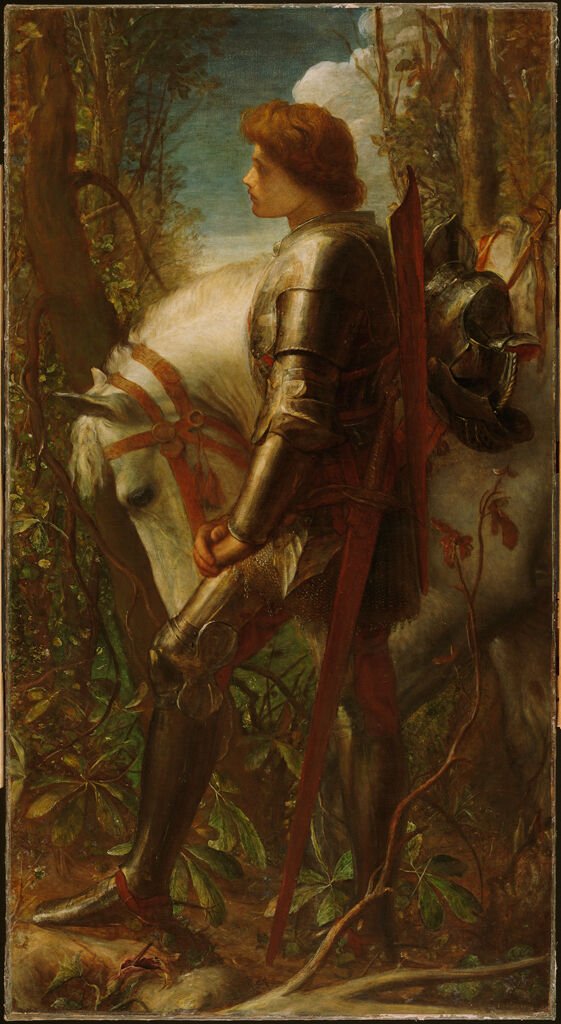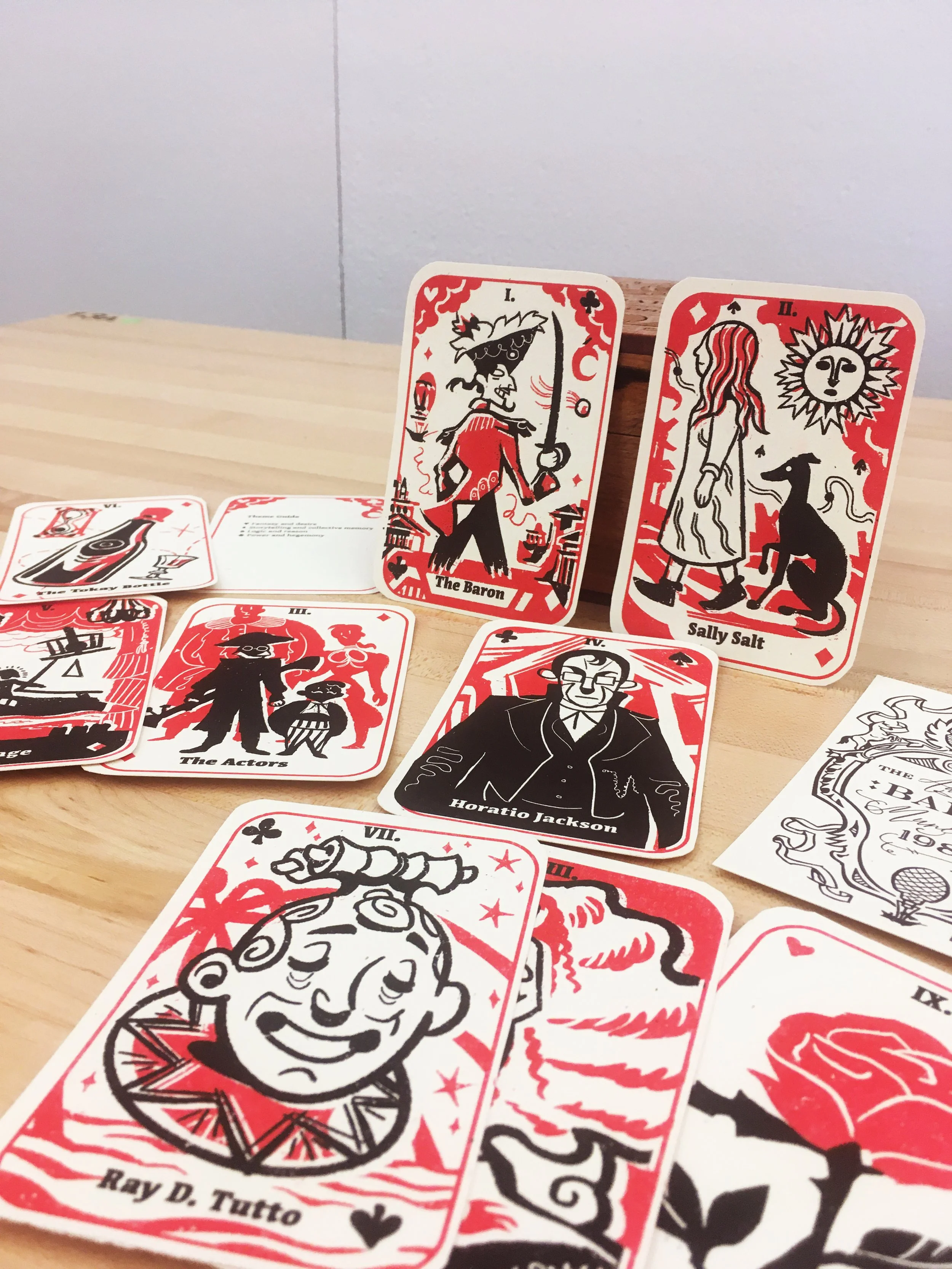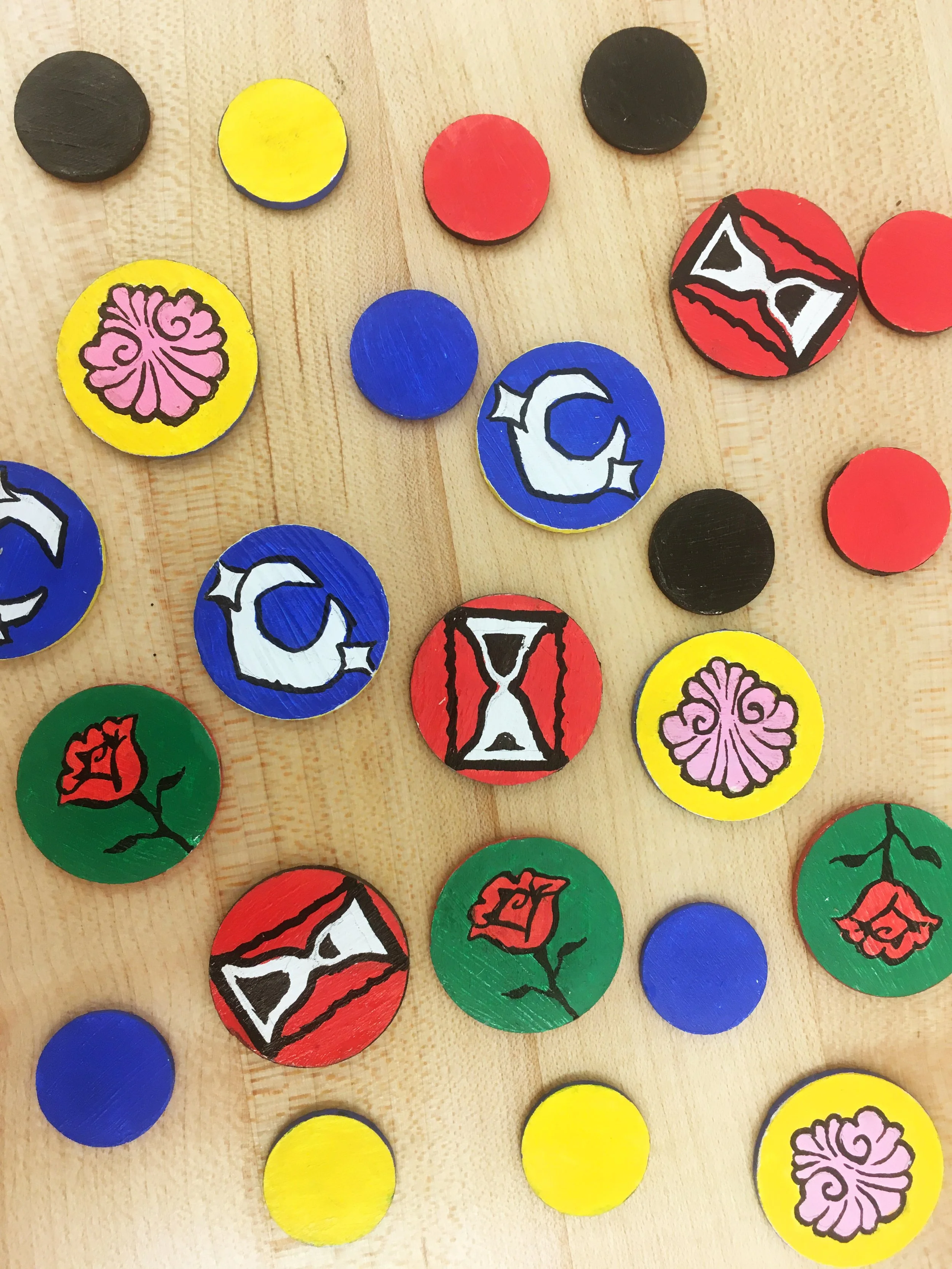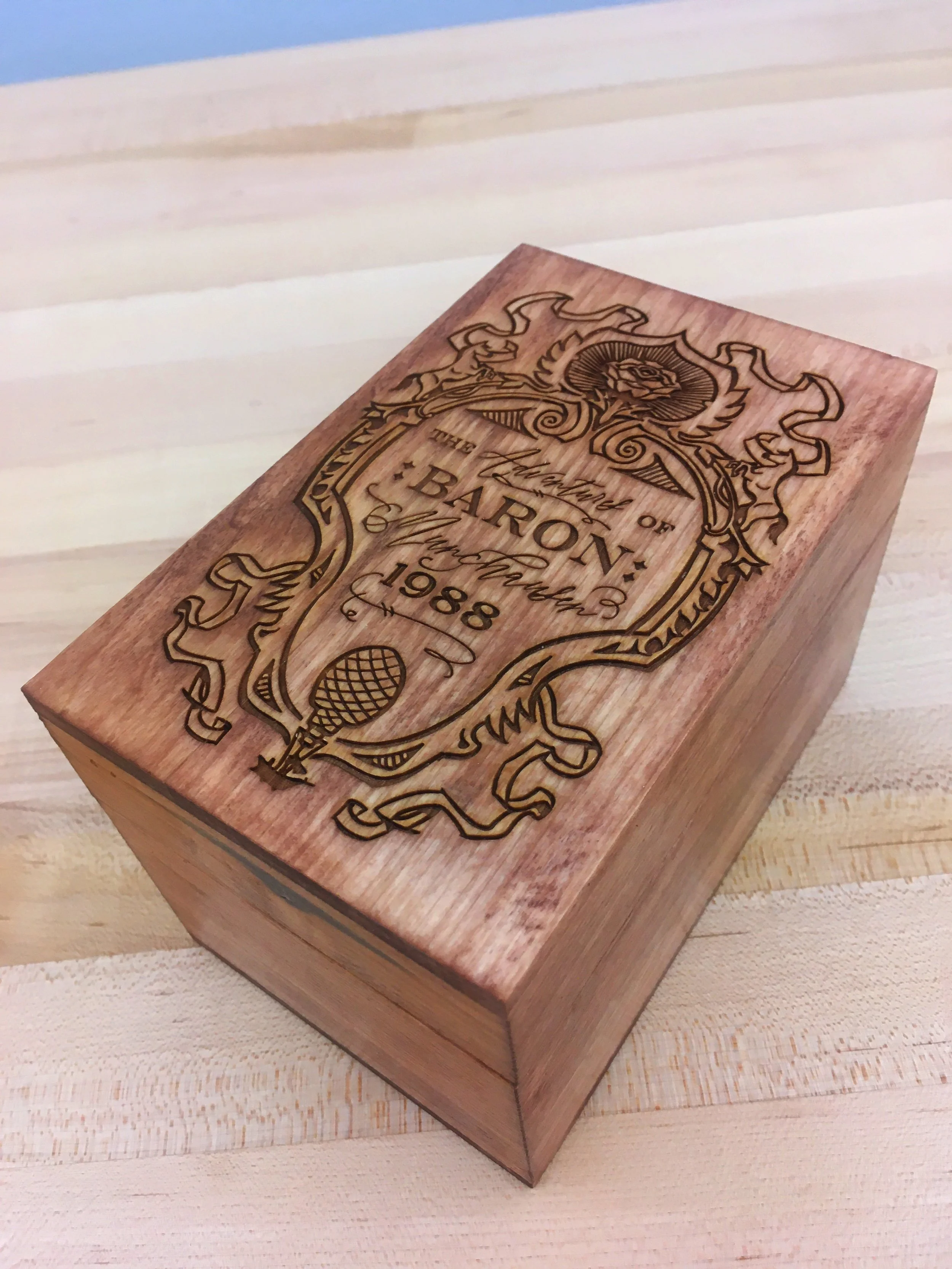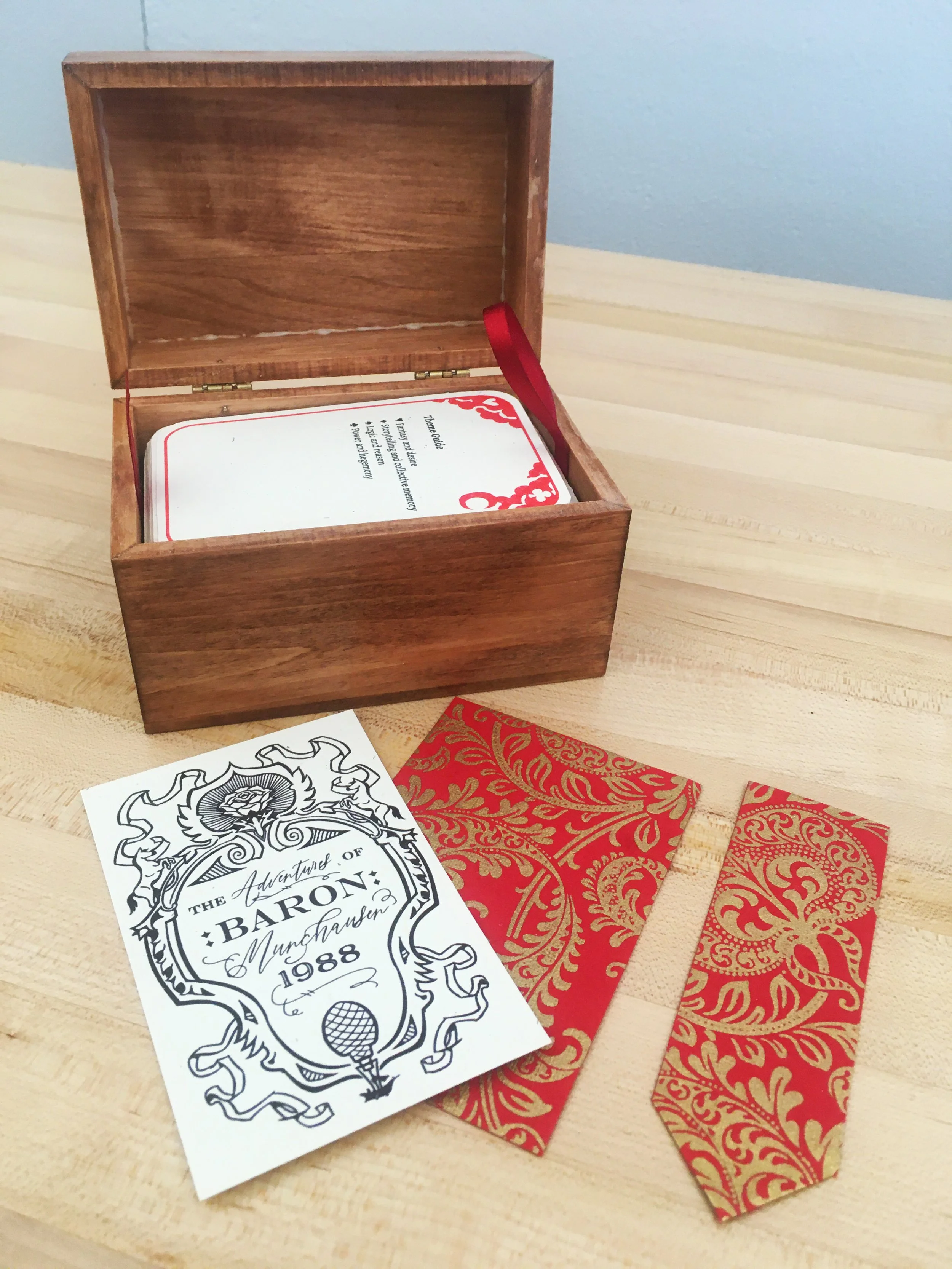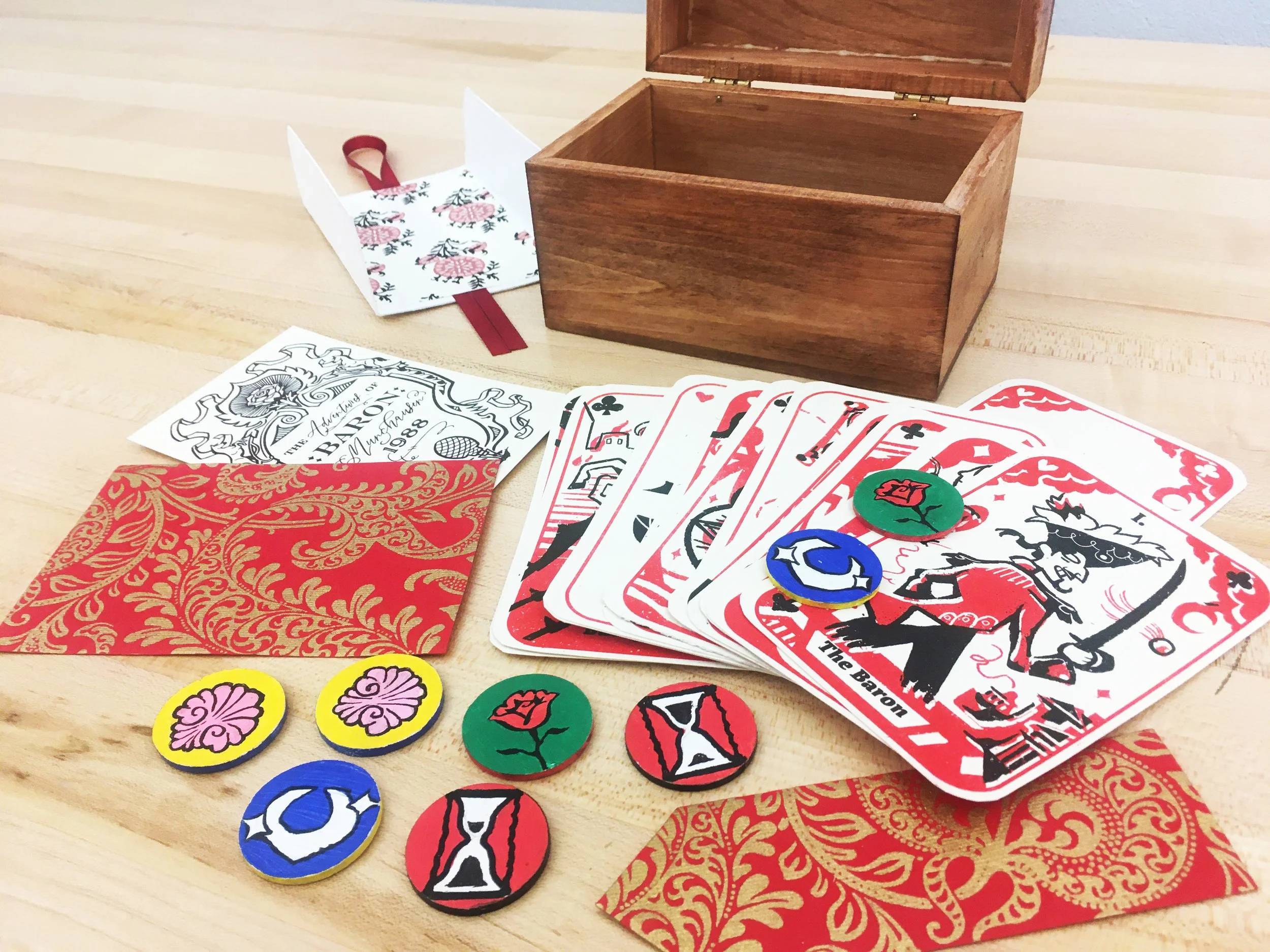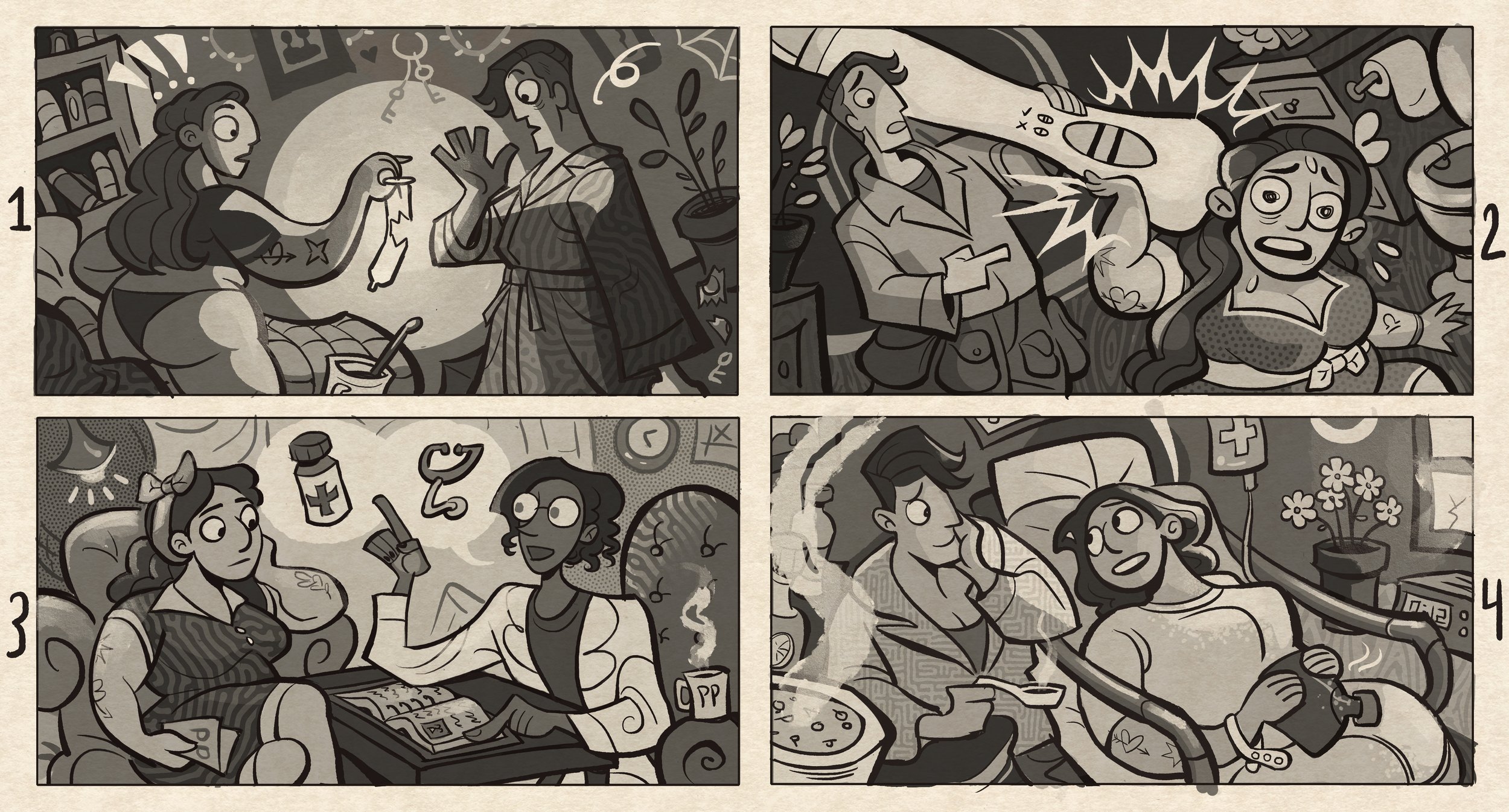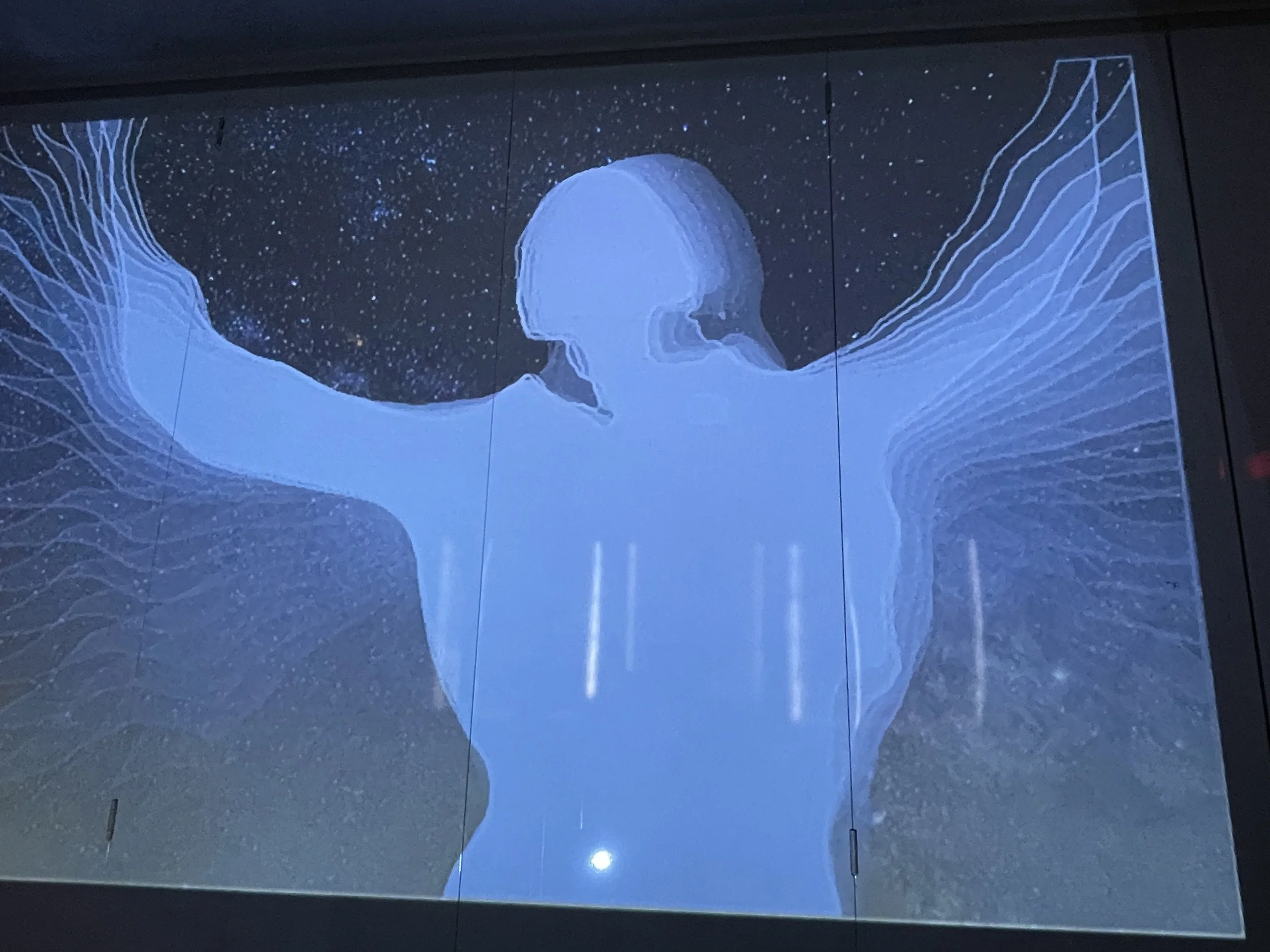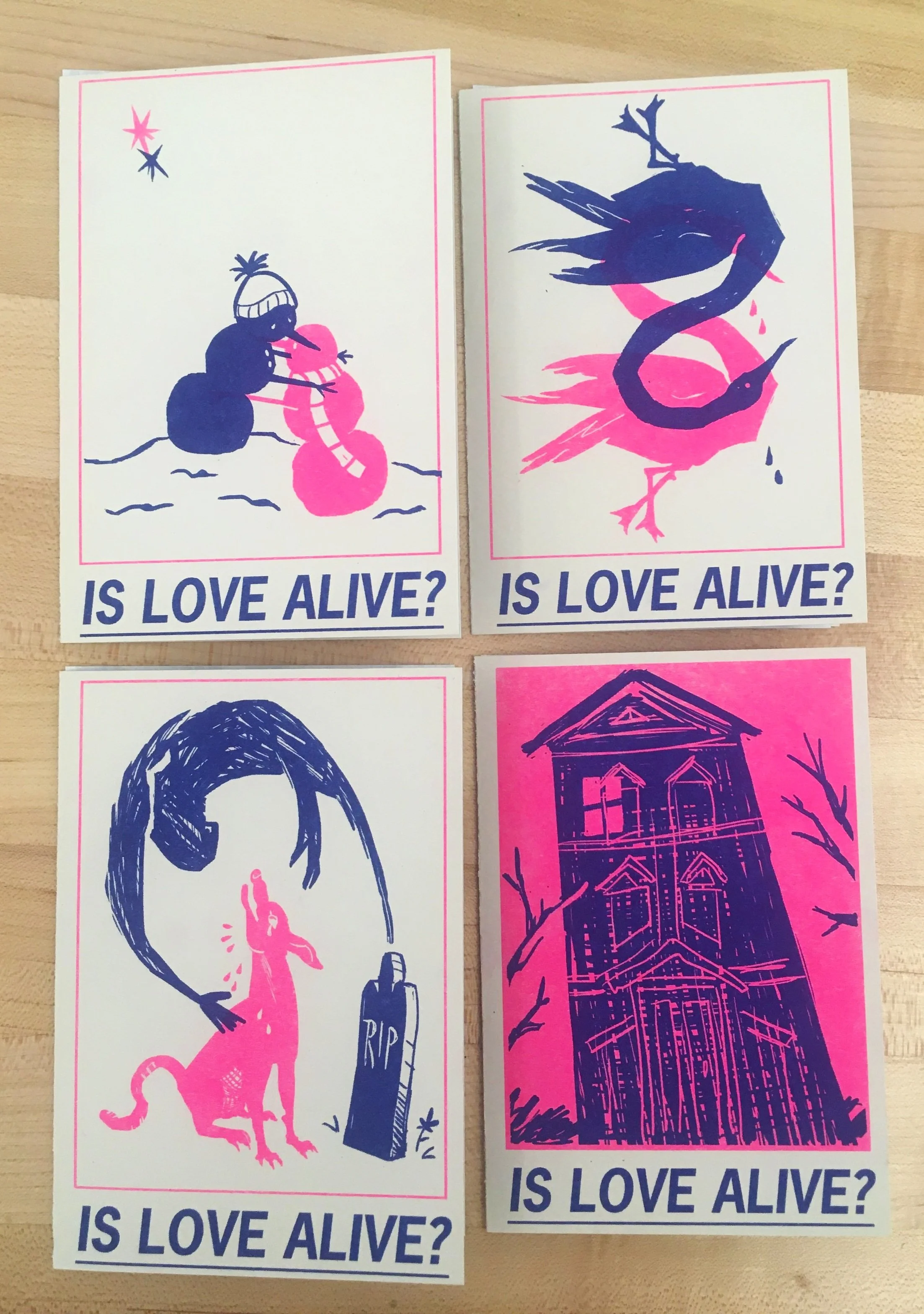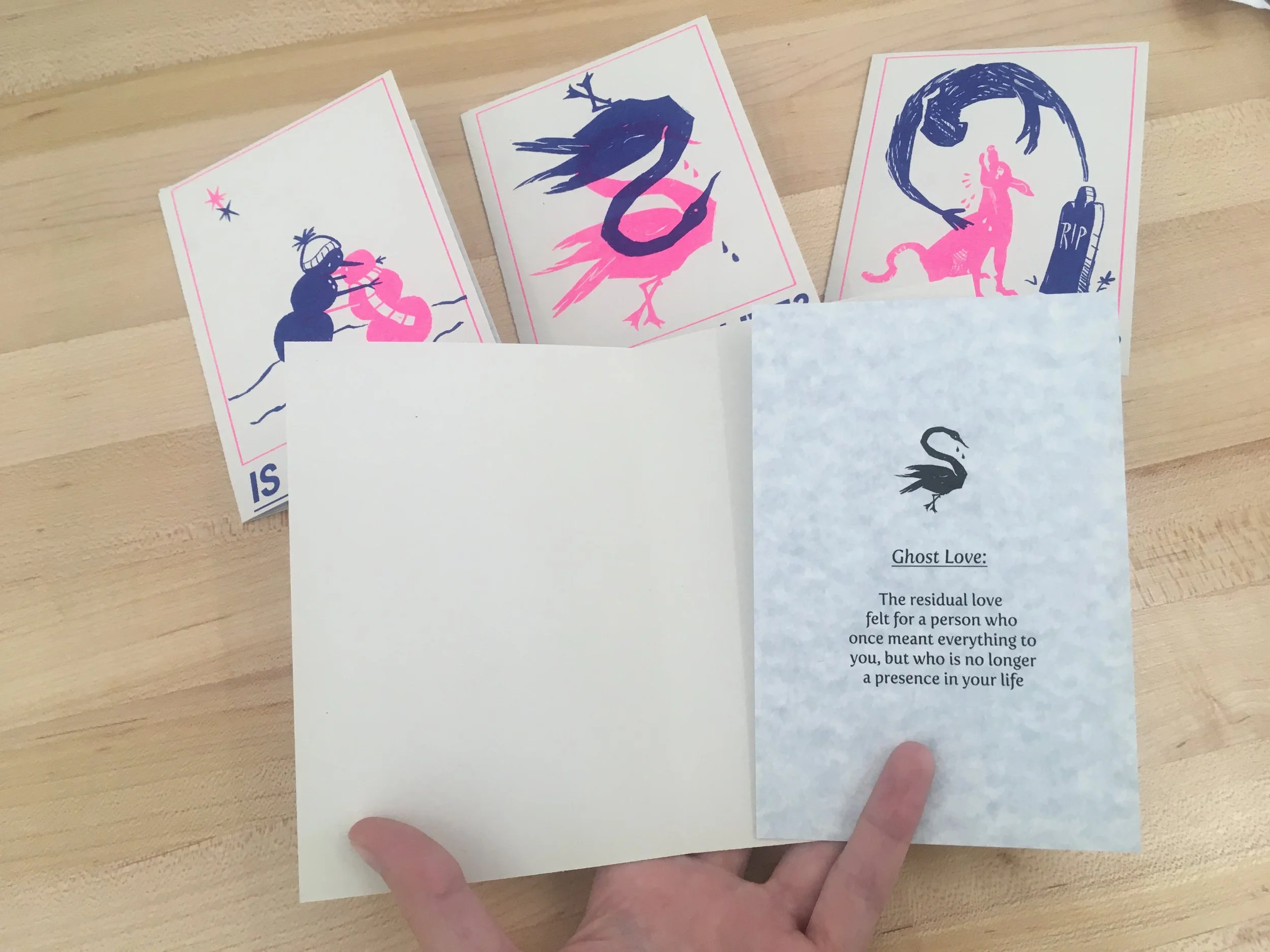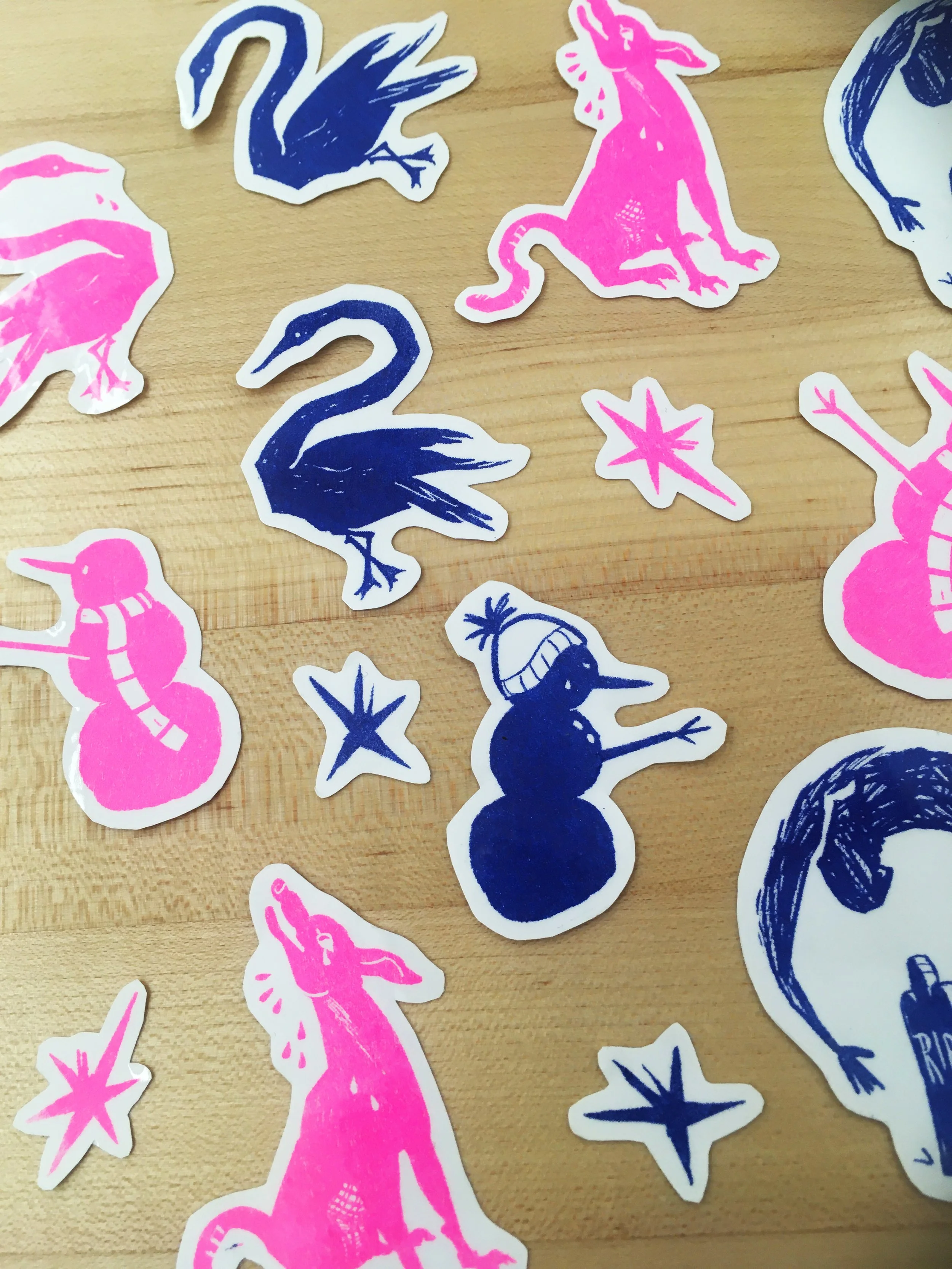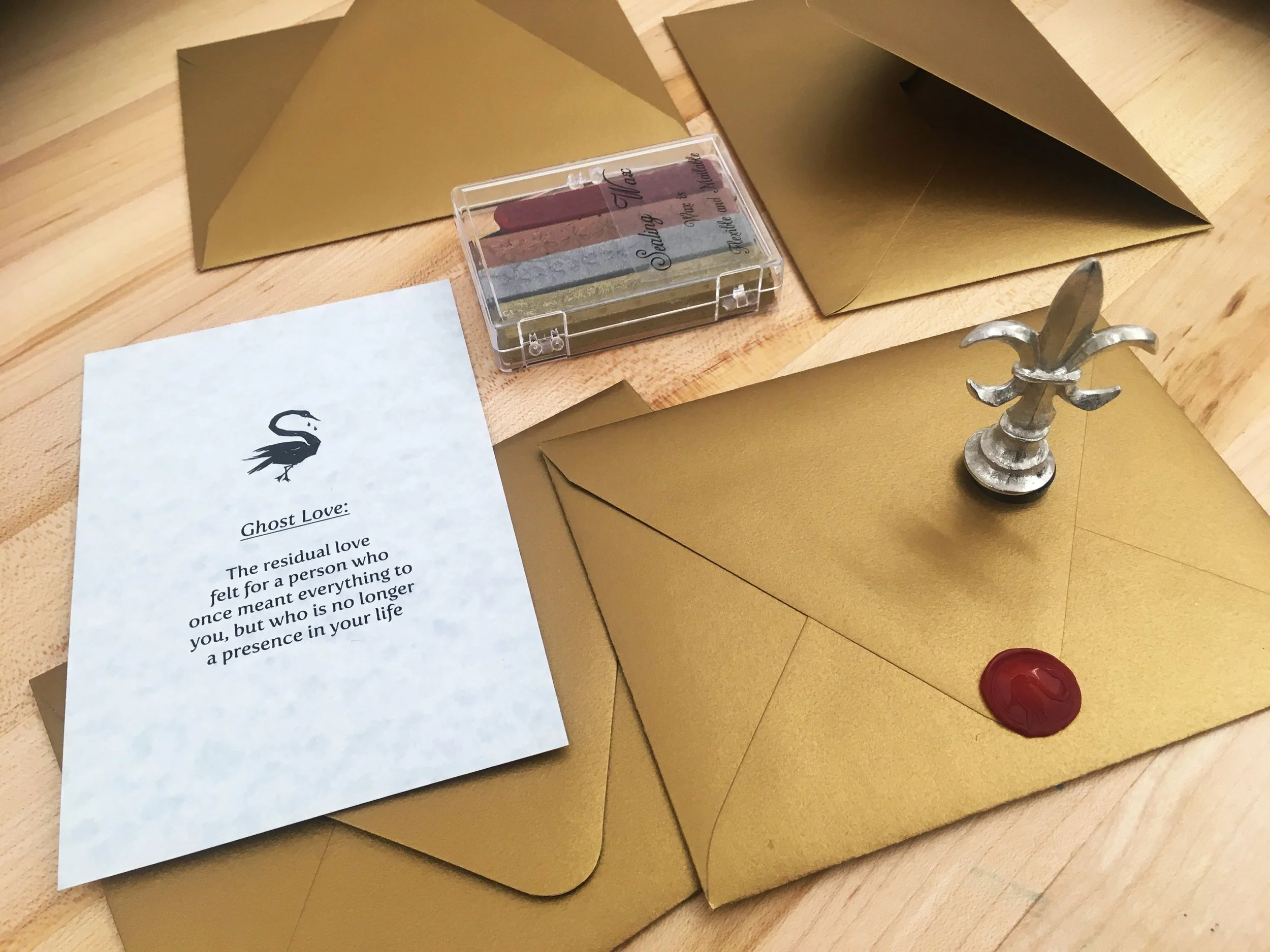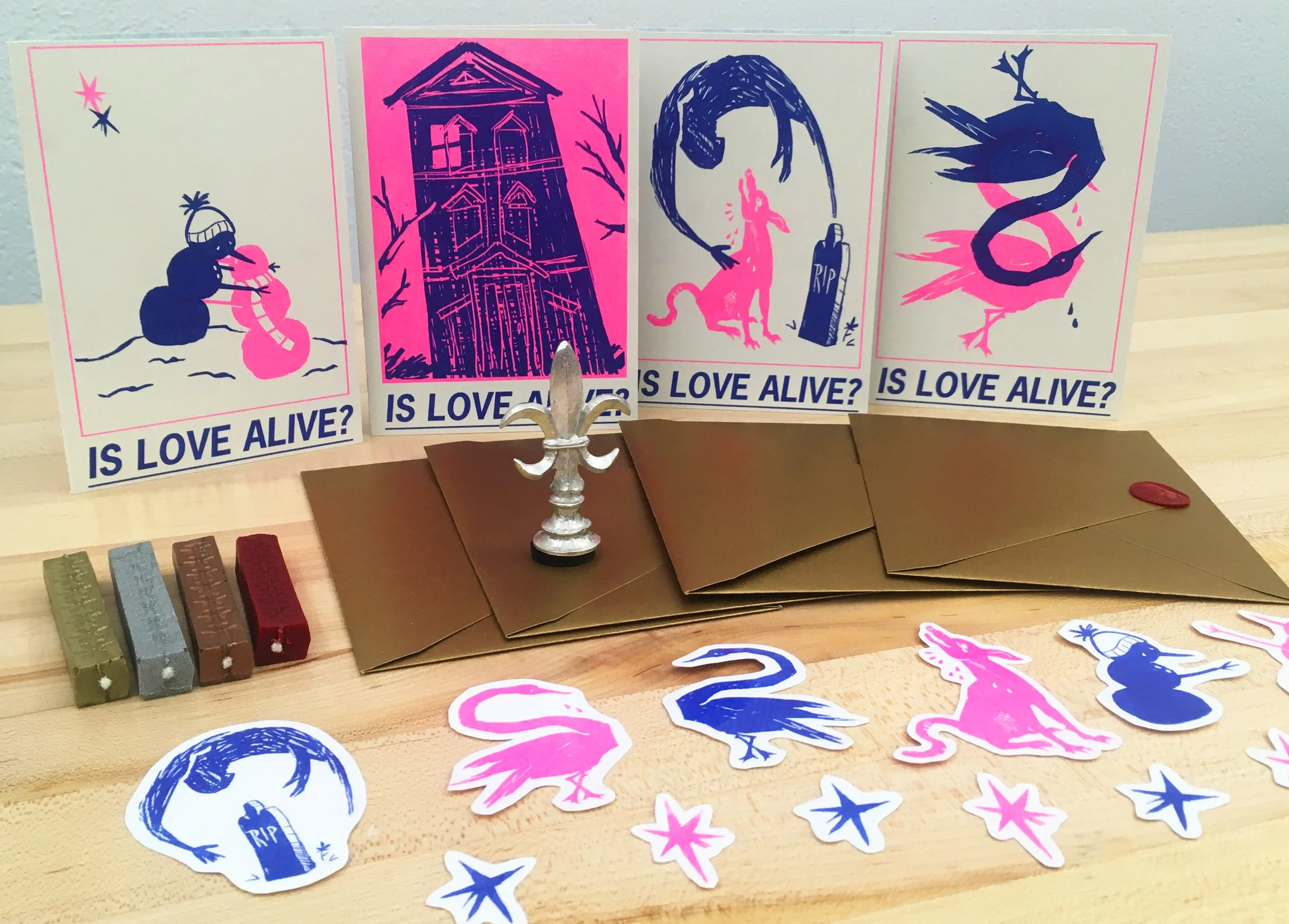Publication Design
PUBLICATION DESIGN
Ghost Catalog
Ctrl+Z Copy Layer
Salome & Helen
Vaporwave/Post-Neoclassicism
See More:
Daemonium Interrogandi
DAEMONIUM INTERROGANDI
For a 2022 project in my Master’s program, we were asked to come up with 50 questions related to design practice and process, and to create a publication based on this source text.
No doubt they were anticipating something modern, cutting-edge, and sleek. Instead, I successfully bewildered my classmates by creating Daemonium Interrogandi, a book inspired by medieval demonology compendiums and woodblock prints.
In my defense, this IS what my personal demons look like.
The Green Knight
THE GREEN KNIGHT
One of my favorite films is The Green Knight, a dark Arthurian fantasy-drama regarding Sir Gawain, a mysterious enemy, a quest, and a beheading.
Rich and strange indeed: Dev Patel’s Gawain shouts at unhearing giants, plays politics and snuggles up to a lordly couple, and dives into a lake to recover the head of a murdered saint. Its intricate medieval sensibilities and powerful, life-and-death imagery captivated me upon first watch.
MY POSTERS
Homonormativity
HOMONORMATIVITY
As though to create a new normativity by rooting queer existence in the ancient past, the Homonormativity posters visualize three famous homoromantic relationships in the ancient world: the Athenian Tyrannicides, Alexander the Great and his lover Hephaestion, and Emperor Hadrian and his lover Antinous.
They use early-internet graphics to evoke a feeling of nostalgia, loss, and disconnect, reflecting both the tragic fates of these three relationships, and the “lost generation” of 90’s queer youth: deprived of heritage and connection with the older generation in the wake of the AIDS crisis, we turn to ancient history to search for signs of ourselves.
HOMONORMATIVITY 1: HADRIAN & ANTINOUS
HOMONORMATIVITY 2: HARMODIOS & ARISTOGITON
HOMONORMATIVITY 3: ALEXANDER & HEPHAESTION
Wrath, Muse—Sing
WRATH, MUSE—SING
Wrath, Muse—Sing is a 32-page educational booklet that introduces readers to the major characters of Homer’s epic poem Iliad, their unique characteristics, and background information.
READ BELOW
SEE MORE:
Archaeological Illustration
Archaeological Illustration
Sketches—Minoan, Mycenaean, and later Greek
(last 3: Pylos & Minoan Crete lecture @ 314 Royce Hall, 11/22/25, Dr. Andreas G. Vlachopoulos)
Sketches—Neolithic China (Shimao Jades lecture @ Bowers Museum, 8/24/25, Dr. Tianlong Jiao)
SEE MORE:
Greek Mythology
Illustrations inspired by the Iliad, Odyssey, and other ancient myth and literature, especially the plays of the Athenian Tragedians and the Roman poet Seneca.
See more Greek Myth-related work:
The Adventures of Baron Munchausen
BARON MUNCHAUSEN
Stories exist at the origin point of my identity. My very earliest memory is of standing up in my crib, looking into a mirror, and seeing a video game character reflected.
To me, a good story is like a beautifully crafted wooden box. It requires skill and study to make. It demands a deep—or a grudging—appreciation for the techniques of the past. It rewards invocation and subversion of familiar ideas. It belongs to an ancient tradition, perhaps the oldest of all human crafting traditions. It takes care and discipline. It is sturdy and useful. It holds important things.
I linger on the word invocation. Though that word can be applied to something as facile as reusing a trope from “Star Trek,” it is also a word with a religious, even magical connotation. To invoke is to ritually call upon a higher power or an ancient tradition. It is also to do something in the world: to cast a spell of creation or transfiguration.
The Adventures of Baron Munchausen (1988) is a story about stories. Helmed by Monty Python veteran Terry Gilliam, the movie centers Baron Hieronymus Karl Friedrich von Münchausen, a charming, eccentric noble officer with a miraculous ability to rewrite the rules of his universe.
Munchausen and his young companion, child actor Sally Salt, attempt to save a besieged European town from an Ottoman invasion. In visually lavish sequences, they travel to the moon, to the forge of the Roman god Vulcan, and to the belly of a sea monster as they search for the Baron’s companions.
Gilliam’s thematic interest lay in the tension between reality and fantasy. This idea is interwoven with themes of knowledge, hierarchy, authority, love, memory, and death. At best, the thematic impulse produces surprising and emotional moments, like Munchausen growing old again as he plays cards with Death. At worst, the film itself falls victim to some of the same unrealistic, dehumanizing fantasies as its protagonist.
I knew early on in the project that I wanted to focus my energies on distilling and reproducing the film’s astonishing images. But I also wanted to mobilize my literary analysis and interpretations of the movie, because it had given me a lot to think about.
As the medium for my illustrations, I decided to create a set of cards that take inspiration from the standard 52-card deck and tarot cards. The cards were designed digitally and printed on a 2-color Risograph.
The back of each card contains my description and analysis of the symbol as it appears in the movie.
To complete the Baron Munchausen “game set,” I hand-painted 24 wooden game pieces with Posca and acrylic paint, to match the cards:
…And crafted a wooden box to hold them. It’s a simple pine box from Blick, woodstained and lacquered to produce a highly crafted, antique effect. The design, which was inspired by 18th century bookplates, was woodburned into the lid with a laser engraver.
Here’s the finished “game set”:
I used storytelling as a metaphor to investigate my relationship to craft. An image onscreen has two “sides”: visual and metatextual. Both are important to its role in the story. The order and method in which the cards are played makes up the story.
The tokens are moments of time—panels, scenes, and sequences. They create opportunities for a hand to be played, for a beat of the story to play out before us.
The box enclosing the set represents the medium itself: film, comic, oral storytelling. Fine craft in media elevates and protects the integrity of the story within.
Planned Parenthood
Planned Parenthood
Graphic design & illustration for Planned Parenthood of Pasadena and San Gabriel, 2016-2020.
Official 2020 VOTE poster for donors
Abortion Story: Illustration for reproductive health presentations
Design Concepts
SEE MORE:
Ghost Love Stationary
Multidisciplinary artist Paolo Scoppola visited our class in March 2020. He brought his magic box: a depth camera that captured and digitized 3D forms in real-time. Projected onto the wall, his program transformed our silhouettes into colorful blobs and glowing outlines, which were projected onto the wall in front of us.
While we stood waving our arms around in empty space, our silhouettes played with virtual marbles, collected floating hearts, and shooed away mosquitos.
Working with Paolo, we each created what he called a scene, importing background and particle images to create a unique virtual environment. I gave Paolo a .jpeg of a chrome orb and an abstract blue background. He tinkered on his computer for a few minutes and created something breathtaking.
The scene resembled a snowy night. My blue silhouette left a fading afterimage as I moved. Snow collected gingerly around my form, then drifted away as I pushed it. The song I had chosen for the background track was both stirring and wistful, like a long train journey. At Paolo’s prompting, I called it “Sacred Space.”
Since I don’t own a depth camera, I could not keep Paolo’s scene—it was ephemeral as the snowy feeling it represented.
I grew up in Los Angeles county, where it doesn’t snow. I cherished the winters where my family would drive up to the mountains to visit a ski park or rent a cabin for a few days. We would go with another family, friends of ours. I had a crush on the youngest son.
When I think about walking in the snow, watching the white wind brush the trees, I get a strange, tight feeling in my chest. It’s the memory of the kind of pure, innocent, unselfish, and fearless love that only children can really experience.
I fell out of touch with my childhood friend during middle school. While I have no particular desire to get back in contact, I still linger on the love I once felt for him. I wondered: if I did speak to him again, what would I say?
Greeting cards are interesting objects. For the person who inscribes the card, they are like the snow, ephemeral. They pass out of your hands, and you may never see them again. The love and care you invested in them goes with it. But it doesn’t disappear. It doesn’t melt. It goes someplace. And what was an ephemeral slip of paper for you may become a lasting keepsake for another person. It is the very evidence of your love.
My cards were illustrated digitally and riso-printed in 2 colors on cardstock. The caption, “Is Love Alive?” is a lyric from Winter Song by Ingrid Michaelson and Sara Bareilles.

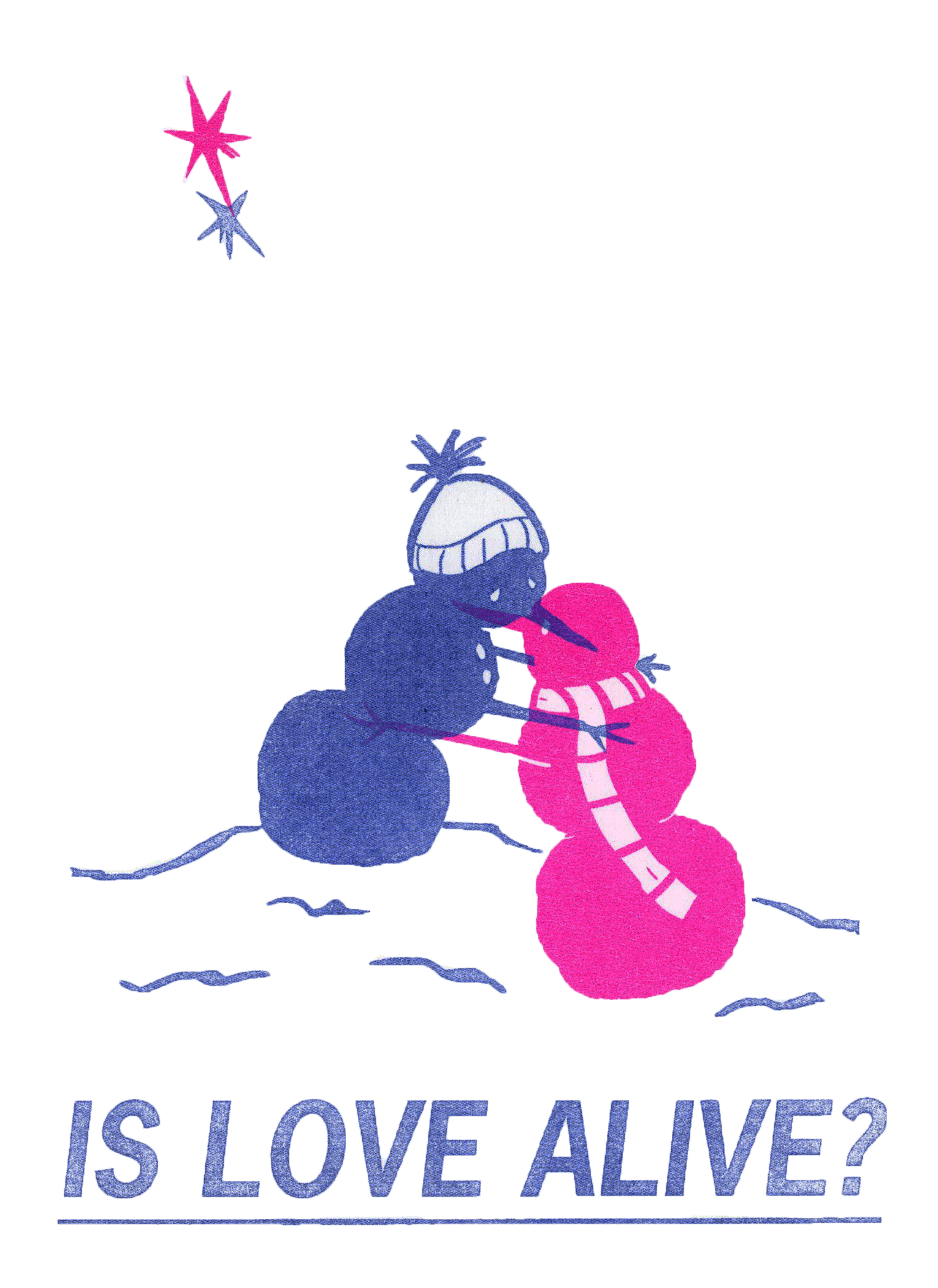
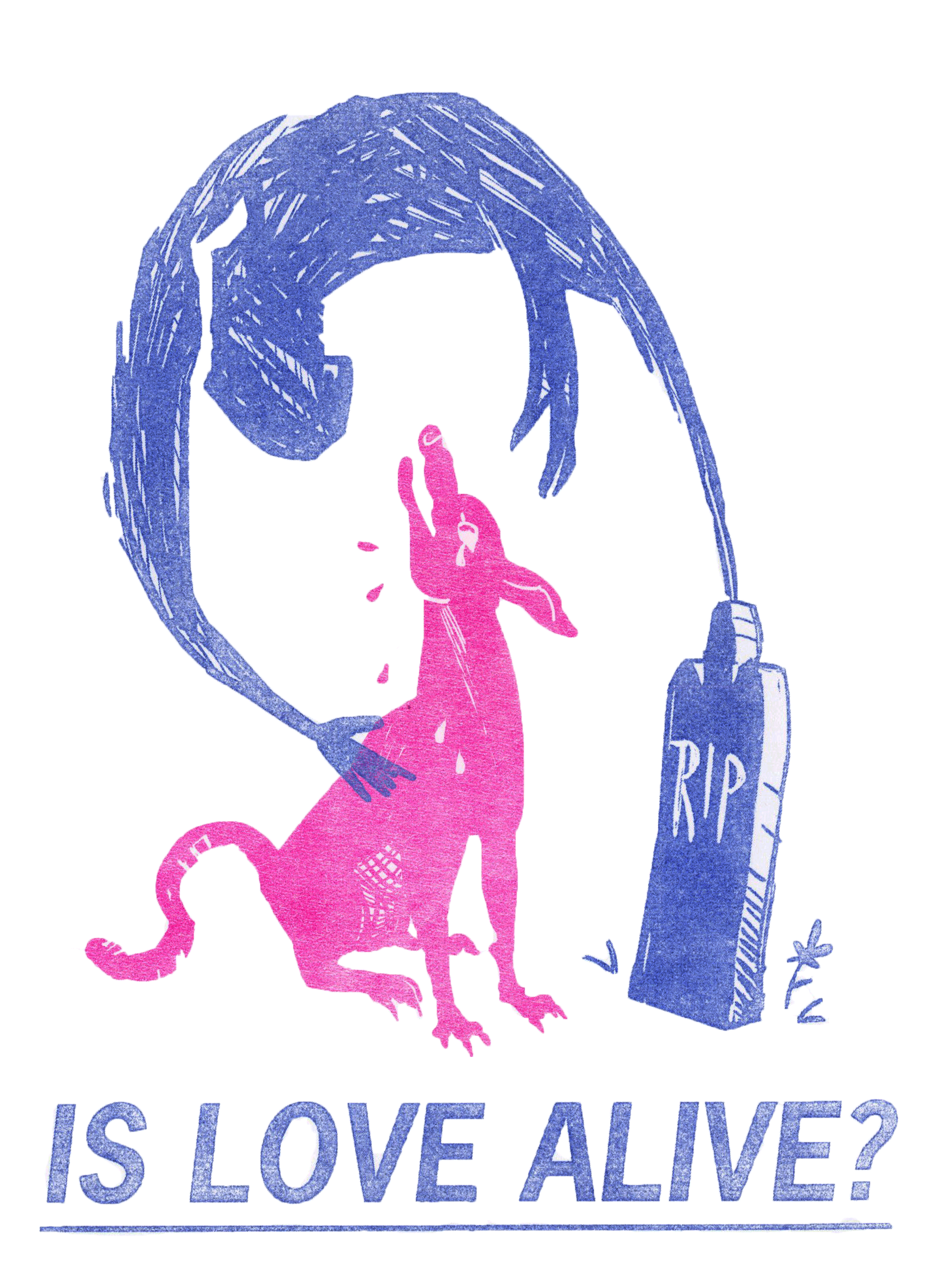

The cards are designed to be sent to people you once loved, but are no longer in contact with. They can be used as regular greeting cards by removing the flyer.
I also Riso-printed and laminated stickers based on my illustrations. My friends tell me they’ve already stuck these on their computers, sketchbooks, and phones.
Here’s the complete set—including the gold envelopes and wax I bought, and the wax seal I laser-engraved with my swan design.
In case you’re wondering, no, I haven’t sent a letter to that childhood crush of mine. Three of the four cards and stickers have been sent, though.


















































































































































































